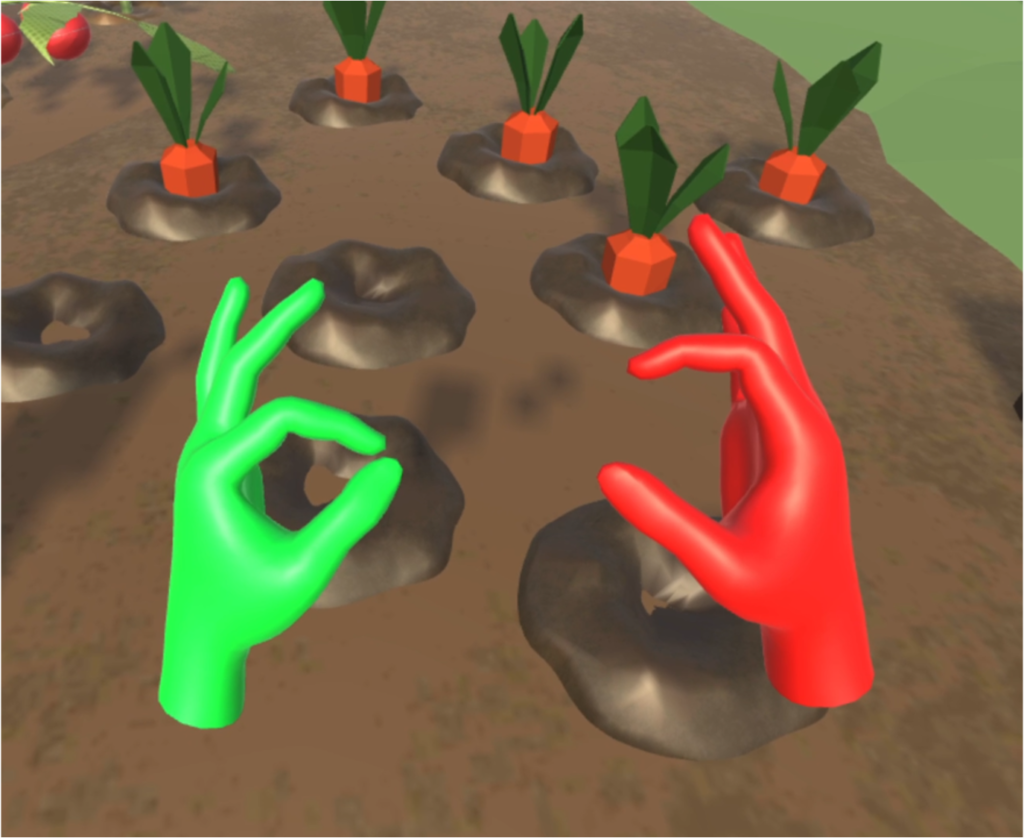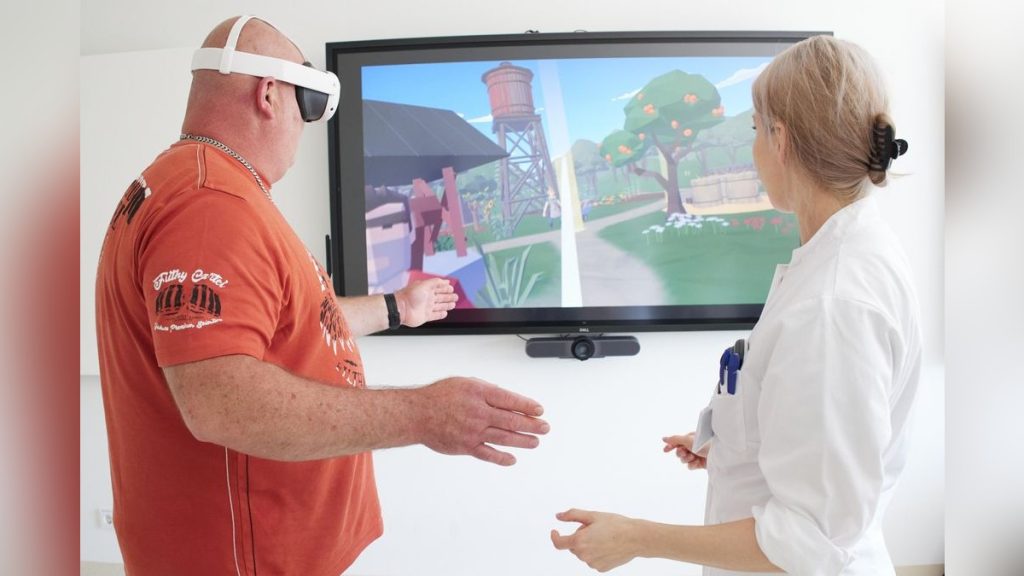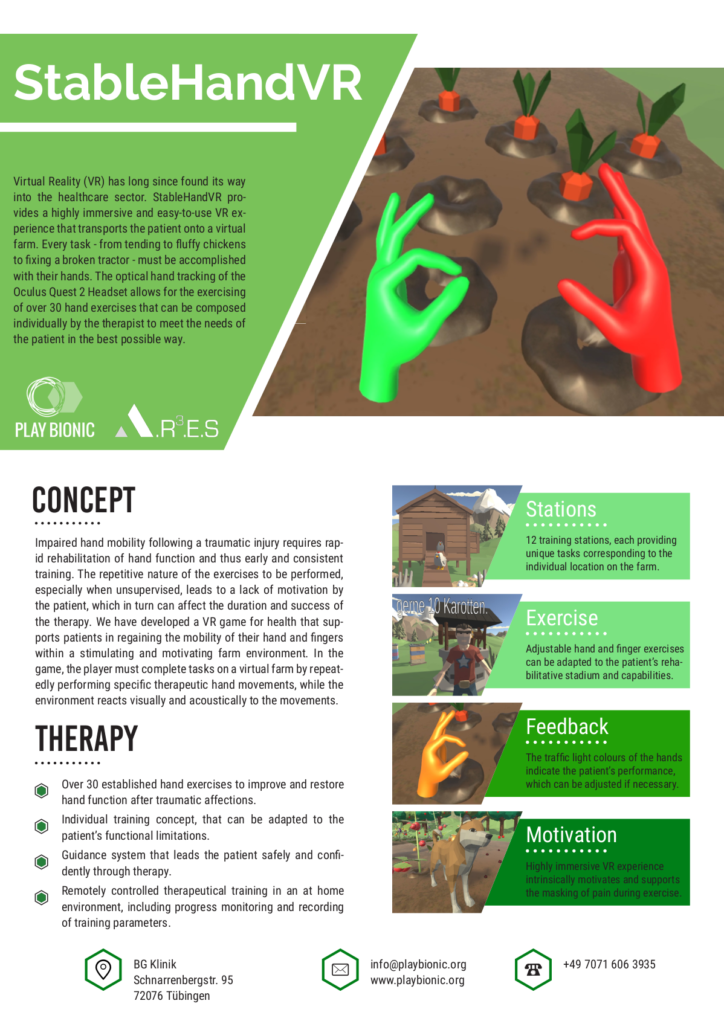An idyllic farm setting invites to linger in virtual reality and has many tasks waiting to practice hand and fingers.
After a hand injury, it is important to restore hand function quickly and completely. Regular and consistent practice of the hand is crucial to the amount and duration with which hand function can be regained. The repetitive nature of the therapeutic exercises can easily lead to a lack of commitment, especially when performed without supervision.
Until now, years of experience are required on the part of trained physiotherapists and occupational therapists to recognize and correct deviations, malpositions and incorrect movements. The success of the therapy is therefore equally dependent on the experience of the respective therapist. However, due to the lack of available therapists, there are already difficulties in providing every patient with the rehabilitation care they need.

With StableHand VR we are developing a virtual reality game that accompanies the patient in their rehabilitation for 15+ days and provides various therapeutic hand and finger exercises. These exercises become more complex and difficult over time. By capturing hand and finger positions in real time, it is possible to analyze patient movements and provide realtime feedback on performing the exercises.

The ultimate goal of this research project is to develop a validated virtual hand rehabilitation application and integrate it into the clinical workflow. This should increase both the frequency and quality of exercise. Furthermore, it will be possible to continuously monitor the patient’s performance and thus measure the progress of the therapy. This will be done during the inpatient stay by means of a VR application in which various hand movements and activities can be performed. In order to achieve optimal rehabilitation results in the subsequent outpatient therapy as well, this should be available at low cost so that patients can also be motivated to exercise their hands in their home environment and at the same time the therapy progress can be monitored.

The target group includes all patients with hand injuries or diseases. In particular, however, this technology is to be used for patients with severe and complex hand injuries, such as after circular saw injuries. The aim is to use the technology for as wide a range of indications as possible, but a particularly effective effect can be expected in the case of severe hand injuries. Above all, the advantage of load- and contact-free training, for patients who would not tolerate this due to pain, makes this concept promising.

Publications
Flyer for StableHandVR:

Berliner Morgenpost, 5.7.2025, Berlin, Germany
Contributors
Project lead: Cosima Prahm
Software developer: Michael Bressler
Student assistants: Nora Dembowski, Dominik Lammer
Clinical consultants: Jonas Kolbenschlag, Tanja Gohlke, Heide Schwieder, Joachim Merk
